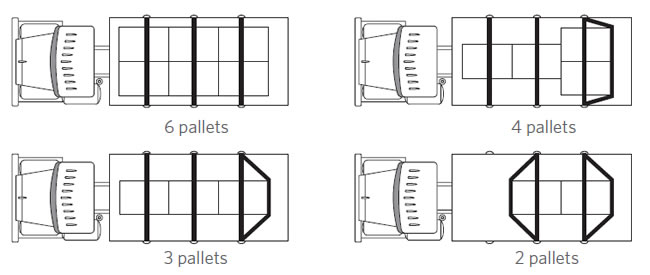Pallets represent a two-fold problem from the point of view of load security. Firstly you must consider the stability of the items stacked on the pallet and then the security of the pallet on the vehicle platform.
The pallets should be of sufficient strength to withstand the load they carry satisfactorily and should be in a good state of repair. Full pallets must be constructed and bound so they are able to withstand a horizontal acceleration of 0.5g (half weight of pallet). If there is any doubt concerning this capability then a simple tilt test should be carried out.
The pallet must be able to withstand a sideways tilt angle of at least 26° before showing signs of any significant distortion.
The securing method adopted will depend on the type and size of the vehicle, the position and number of anchor points, and the size, weight and number of pallets in the load. However, the following principles should be followed for whatever scheme is chosen:
Pallets must not be used for carrying the following:
 Figure 20
Figure 20Two-hundred litre drums on wooden pallets must only be carried on vehicles equipped with headboards. Pallets must be placed side by side across the vehicle deck starting from the headboard and working to the rear of the deck. Single pallets must be placed centrally across the vehicle deck.
Drums on pallets are to be secured to the deck by ropes or straps bearing on wooden corner boards. The minimum dimensions of the corner board are shown in figure 21. Drums must be secured by a corner board at each side of the vehicle. At least two ropes or straps must bear on each corner board as shown in figure 22 and figure 23.
Corner boards must rest on at least two drums. There must be at least one rope or strap bearing on the corner board across each row of drums.

Figure 21 Wooden corner board detail – minimum dimensions (mm)

Figure 22
Drums must be loaded on pallets in even numbers. Odd drums must be loaded singly in accordance with figure 36 in the general freight section. Chains are not to be used to secure drums.
General freight carrying drums

Figure 23 Securing method for 4-drum and 6-drum pallets